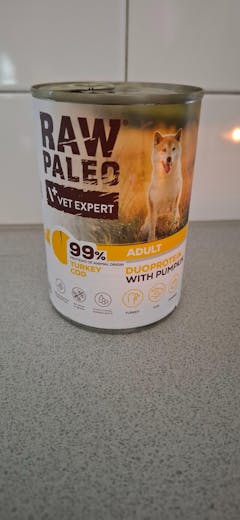Torrfoder för Hundar: Den Optimala Basen för Ett Friskt Hundliv
Att välja rätt torrfoder för hundar är en av de viktigaste beslut du tar som hundägare. Det är grunden för din hunds dagliga näringsintag och spelar en avgörande roll för dess hälsa, energi och välbefinnande genom hela livet. På Zoostar.se är vi stolta över att kunna erbjuda ett omfattande sortiment av högkvalitativt torrfoder för hundar, anpassat för att möta de unika behoven hos hundar i alla åldrar, storlekar, raser och med olika hälsotillstånd. Vi förstår att varje hund är unik, och vårt mål är att hjälpa dig hitta det perfekta fodret som ger din fyrbenta vän de bästa förutsättningarna för ett långt och lyckligt liv. Låt oss utforska varför torrfoder är ett så populärt och fördelaktigt val, och hur du kan navigera i det stora utbudet för att hitta det som passar just din hund.
Varför Välja Torrfoder? Fördelarna med Kibble
Torrfoder, även känt som kibble, är det mest etablerade och använda foderalternativet för hundar, och dess popularitet är välförtjänt. Det erbjuder en rad fördelar som gör det till ett utmärkt val för de flesta hundar och ägare:
- **Komplett och Balanserat Näringsinnehåll:** Moderna torrfoder är vetenskapligt formulerade för att vara näringsmässigt kompletta. Det innebär att de innehåller alla nödvändiga proteiner, fetter, kolhydrater, vitaminer och mineraler i rätt proportioner för att din hund ska må bra. Detta eliminerar behovet av extra kosttillskott och ger dig trygghet i att din hund får allt den behöver.
- **Förbättrad Tandhälsa:** De hårda foderbitarna bidrar till att rengöra hundens tänder mekaniskt när den tuggar. Detta kan hjälpa till att minska uppbyggnaden av plack och tandsten, vilket i sin tur förebygger tandköttssjukdomar och dålig andedräkt. Även om det inte ersätter regelbunden tandborstning, är det ett viktigt komplement till hundens munhygien.
- **Ekonomiskt och Effektivt:** Per portion är torrfoder ofta det mest kostnadseffektiva alternativet. Dess höga näringstäthet innebär att din hund får i sig tillräckligt med energi och näring från en mindre mängd foder, vilket gör att en påse räcker längre.
- **Lång Hållbarhet och Enkel Förvaring:** Med sin låga vattenhalt har torrfoder en betydligt längre hållbarhet än våtfoder eller råfoder. En oöppnad påse kan förvaras länge, och även en öppnad påse håller sig fräsch i veckor om den förvaras korrekt i en lufttät behållare på en sval och torr plats. Detta minskar svinn och gör inköp och planering smidigare.
- **Praktiskt och Bekvämt:** Torrfoder är lätt att hantera och dosera, vilket är viktigt för att bibehålla en hälsosam vikt och undvika över- eller undervikt. Det är också praktiskt att ta med på resor, vid utomhusaktiviteter eller om du använder en foderautomat. Det kladdar minimalt och är enkelt att städa upp.
- **Minskad Lukt:** Jämfört med våtfoder tenderar torrfoder att ha en mildare lukt, vilket uppskattas av många ägare.
Välja Rätt Torrfoder: Faktorer att Beakta
Med det stora utbudet av torrfoder för hundar kan det vara svårt att veta var man ska börja. Här är de viktigaste faktorerna att ha i åtanke när du väljer:
1. Ålder och Livsstadium:
- Valpfoder: Valpar har intensiva tillväxtperioder och behöver ett torrfoder med högre protein- och fettinnehåll samt en specifik balans av kalcium och fosfor för att stödja ben- och muskelutveckling. Bitarnas storlek är också anpassad för små valpmunnar. För nyfödda valpar finns även mjölkersättning och valpvälling.
- Vuxenfoder: För vuxna hundar är energibehovet mer stabilt. Fodret ska vara balanserat för att bibehålla muskelmassa, energinivåer och en frisk päls.
- Seniorfoder: Äldre hundar har ofta en långsammare ämnesomsättning och kan behöva ett torrfoder med lägre kaloriinnehåll för att undvika viktuppgång. Dessa foder innehåller ofta tillsatser som glukosamin och kondroitin för att stödja ledhälsa, samt lättsmälta ingredienser.
2. Rasstorlek och Aktivitetsnivå:
- Små raser: Behöver energitäta torrfoder med små foderbitar anpassade för deras mindre munnar och snabbare metabolism.
- Stora raser: Behöver torrfoder som främjar en kontrollerad tillväxt för att skydda leder och skelett, ofta med större bitar.
- Aktiva hundar: Arbetande hundar eller de med hög aktivitetsnivå behöver ett torrfoder med högre energi- och proteininnehåll.
3. Särskilda Behov och Hälsotillstånd:
Många hundar har specifika behov som kräver ett specialanpassat torrfoder.
- Allergier och känslig mage: För hundar med känslig mage eller foderallergier kan spannmålsfritt hundfoder vara ett utmärkt val. Det minskar risken för magbesvär och hudirritationer. Det finns även torrfoder med begränsat antal ingredienser eller hydrolyserat protein.
- Viktkontroll: För överviktiga hundar eller de som lätt går upp i vikt finns torrfoder med lägre kaloriinnehåll och högre fiberhalt för att skapa mättnad.
- Veterinärfoder: För specifika medicinska tillstånd som njursjukdom, diabetes, urinvägsproblem, eller svåra allergier, finns särskilda veterinärfoder i torrfoderform. Dessa ska dock enbart användas på rekommendation av en veterinär.
- Hud- och pälsproblem: Torrfoder med höga nivåer av omega-3 och omega-6 fettsyror kan förbättra hudens hälsa och ge en glänsande päls.
Kvalitet och Ingredienser i Torrfoder
När du granskar olika torrfoder, är det viktigt att läsa ingredienslistan noggrant. Ett högkvalitativt torrfoder bör alltid ha en namngiven proteinkälla (t.ex. kyckling, lamm, lax, nöt) som första ingrediens. Undvik generiska termer som "kött och animaliska biprodukter" utan specifikation, då dessa kan vara av varierande kvalitet.
Se till att torrfodret innehåller en balanserad mix av:
- **Högkvalitativt Protein:** Essentiellt för muskeluppbyggnad, vävnadsreparation och ett starkt immunförsvar. Källor som färskt kött, fisk eller ägg är att föredra.
- **Välbalanserade Fetter:** Viktiga energikällor och bidrar till upptaget av fettlösliga vitaminer. Omega-3 och omega-6 fettsyror från källor som fiskolja är avgörande för hud- och pälshälsa.
- **Lättsmälta Kolhydrater:** Ger energi och fibrer som stödjer matsmältningen. Källor kan vara ris, potatis, sötpotatis, ärtor eller linser. För känsliga hundar är spannmålsfritt torrfoder ett utmärkt alternativ.
- **Viktiga Vitaminer och Mineraler:** Ett komplett torrfoder ska vara berikat med en fullständig uppsättning vitaminer och mineraler för att stödja alla kroppsfunktioner.
- **Fibrer:** Främjar en sund matsmältning och hjälper till att reglera tarmfunktionen.
Undvik torrfoder med onödiga fyllnadsmedel, konstgjorda färger, smaker eller konserveringsmedel. Naturliga konserveringsmedel som E-vitamin (tokoferoler) är att föredra.
Övergång till Nytt Torrfoder och Korrekt Förvaring
När du introducerar ett nytt torrfoder är det viktigt att göra det gradvis för att undvika magbesvär. Börja med att blanda en liten mängd av det nya fodret med det gamla och öka successivt andelen nytt foder under 7-10 dagar. Detta ger din hunds matsmältningssystem tid att anpassa sig.
Korrekt förvaring av torrfoder är avgörande för att bibehålla dess kvalitet och fräschör. Förvara alltid torrfodret i sin originalförpackning, placerad inuti en lufttät behållare, på en sval och torr plats borta från direkt solljus och värmekällor. Detta skyddar fodret från syre, fukt, skadedjur och bibehåller näringsvärdet.
Kombinera Torrfoder med Andra Foderformer och Tillskott
Även om torrfoder är en komplett kost, väljer många att komplettera med andra foderformer eller tillskott:
- Våtfoder: Att blanda en liten mängd våtfoder med torrfodret kan öka aptitligheten och bidra till hundens vätskeintag.
- Hundgodis och Tuggbitar: Använd hundgodis för träning och belöning, och tuggbitar för mental stimulans och ytterligare tandrengöring. Se till att de är hälsosamma och tas med i den dagliga kaloriberäkningen.
Zoostar.se – Din Expert på Torrfoder för Hundar
På Zoostar.se har vi ett djupt engagemang för hundars hälsa och välbefinnande. Vårt noggrant utvalda sortiment av torrfoder för hundar kommer från välrenommerade tillverkare som delar vår passion för kvalitet och näring. Oavsett om din hund är en lekfull valp, en energisk vuxen, en klok senior, eller har särskilda behov som kräver spannmålsfritt eller veterinärfoder, hittar du det perfekta alternativet hos oss.
Investera i din hunds hälsa idag genom att välja ett högkvalitativt torrfoder från Zoostar.se. Vi erbjuder expertis, brett utbud och bekväm leverans direkt till din dörr. Låt oss tillsammans ge din hund de bästa förutsättningarna för ett långt, friskt och lyckligt liv! Upptäck hela vårt utbud av hundmat och foder.
Vanliga frågor om Torrfoder för Hundar
Här besvarar vi några av de mest frekventa frågorna vi får angående torrfoder för hundar.
Varför ska jag välja torrfoder till min hund?
Torrfoder är det mest populära valet av hundmat bland hundägare, och det finns goda skäl till detta. Det erbjuder en mängd fördelar som gör det till ett praktiskt och näringsrikt alternativ för de flesta hundar. Här är de främsta anledningarna att välja torrfoder: 1. Komplett och Balanserat Näringsinnehåll: Högkvalitativt torrfoder är noggrant formulerat för att innehålla alla de näringsämnen, vitaminer och mineraler som din hund behöver för att trivas. Tillverkare investerar mycket i forskning och utveckling för att säkerställa att fodret är näringsmässigt komplett för hundens livsstadium, storlek och aktivitetsnivå. Du kan vara säker på att din hund får en balanserad kost utan att behöva komplettera med andra näringsämnen. 2. Förbättrad Tandhälsa: De hårda bitarna i torrfoder (kibble) har en lätt slipande effekt när hunden tuggar. Detta kan bidra till att mekaniskt skrapa bort plack och minska uppbyggnaden av tandsten på tänderna. Även om det inte ersätter regelbunden tandborstning, är det ett viktigt komplement för att bibehålla god munhygien. 3. Ekonomiskt Fördelaktigt: Jämfört med våtfoder eller råfoder är torrfoder ofta det mest kostnadseffektiva alternativet per portion. Dess höga näringstäthet innebär att mindre mängder foder behövs för att tillgodose hundens energibehov, vilket gör att en påse räcker längre. 4. Lång Hållbarhet och Enkel Förvaring: Torrfoder har en mycket lägre vattenhalt än våtfoder, vilket ger det en betydligt längre hållbarhetstid. En oöppnad påse kan förvaras länge, och även en öppnad påse håller sig fräsch i veckor (om den förvaras korrekt i en lufttät behållare på en sval och torr plats). Detta minskar svinn och gör inköp mer bekväma. 5. Praktiskt och Bekvämt: Torrfoder är otroligt lätt att hantera och dosera. Det är enkelt att mäta upp exakta portioner, vilket är viktigt för viktkontroll och för att undvika över- eller undervikt. Det kladdar mindre än våtfoder, vilket gör det enklare att hålla rent runt matplatsen. Det är också praktiskt att ta med på resor eller vid andra tillfällen då enkelhet är viktig. 6. Minskad Lukt: Till skillnad från våtfoder tenderar torrfoder att ha en mildare lukt, både i förpackningen och i skålen, vilket uppskattas av många ägare. 7. Lämpligt för Foderautomater: Torrfoder är det enda foderalternativet som kan användas i foderautomater, vilket är en stor fördel för hundägare som vill schemalägga utfodringen eller som är borta under delar av dagen. Trots alla dessa fördelar är det viktigt att notera att det finns situationer då andra foderformer kan vara mer lämpliga, t.ex. för hundar med nedsatt aptit, tandproblem som gör det svårt att tugga hårt foder, eller vissa medicinska tillstånd som kräver högre vätskeintag. I sådana fall kan en kombination av torrfoder och våtfoder vara en ideal lösning. Väljer du ett högkvalitativt torrfoder anpassat efter din hunds specifika behov, ger du den en utmärkt grund för ett friskt och aktivt liv.
Hur byter jag från ett torrfoder till ett annat på bästa sätt?
Att byta torrfoder för din hund kräver en gradvis övergång för att undvika mag- och tarmbesvär som diarré, kräkningar eller uppblåsthet. Hundens matsmältningssystem behöver tid att anpassa sig till de nya ingredienserna och den nya sammansättningen av näringsämnen. En långsam introduktion av det nya fodret minimerar risken för oönskade reaktioner. Här är en beprövad steg-för-steg-guide för att byta foder på bästa sätt: Steg 1: Planera övergången över 7-10 Dagar: Detta är den rekommenderade tidsramen för de flesta hundar. För hundar med känslig mage kan det vara nödvändigt att förlänga övergångsperioden till 14 dagar eller mer. Steg 2: Gradvis Blandning av Foder: Börja med att blanda en liten mängd av det nya fodret med en större mängd av det gamla fodret. Öka sedan gradvis andelen av det nya fodret och minska andelen av det gamla fodret under övergångsperioden. Här är en typisk fördelning: - Dag 1-2: 75% gammalt foder, 25% nytt foder. - Dag 3-4: 50% gammalt foder, 50% nytt foder. - Dag 5-6: 25% gammalt foder, 75% nytt foder. - Dag 7: 100% nytt foder. Observara: Dessa dagar är en riktlinje. Om din hund visar tecken på magbesvär (lös avföring, kräkningar, minskad aptit), sakta ner processen och håll dig vid en viss blandning i ett par extra dagar tills magen stabiliserats innan du ökar andelen nytt foder igen. Steg 3: Vatten och Mängd: - Se till att din hund alltid har tillgång till färskt vatten. Vissa hundar kan bli lite törstigare under en foderomställning. - Följ rekommendationerna för utfodringsmängd på den nya foderförpackningen. Tänk på att olika foder kan ha olika energitäthet, så den mängd din hund åt av det gamla fodret kanske inte är samma för det nya. Steg 4: Var Uppmärksam på Hundens Reaktioner: Håll ett noggrant öga på din hund under hela övergångsperioden. Tecken på att övergången går bra inkluderar: - Normal avföring: Fast och välformad. - God aptit: Hunden äter med god aptit. - Normala energinivåer: Hunden är pigg och glad som vanligt. Tecken på att övergången behöver anpassas: - Lös avföring eller diarré. - Kräkningar. - Minskad aptit eller vägran att äta. - Ökad gasproduktion eller uppblåsthet. Om allvarliga eller ihållande problem uppstår, kontakta din veterinär för råd. De kan hjälpa till att identifiera om det är en foderintolerans, en allergi eller något annat som orsakar besvären. Steg 5: Bibehåll Konsistens: När du väl har bytt till det nya fodret, försök att hålla dig till det så länge din hund mår bra av det. Frekventa foderbyten utan medicinsk anledning kan stressa hundens matsmältningssystem. Tips för en smidig övergång: - Byt inte foder under stressiga perioder för hunden (t.ex. flytt, sjukdom, resor). - Om din hund är en 'snabbätare', överväg en aktiveringsskål eller långsam matskål för att bromsa tempot, vilket kan underlätta matsmältningen. - Ge små, täta måltider under övergången om hunden har en känslig mage. Genom att följa denna process kan du säkerställa en smidig och framgångsrik övergång till ett nytt torrfoder, vilket bidrar till din hunds fortsatta hälsa och välbefinnande.
Hur länge håller torrfoder och hur förvarar jag det bäst?
Korrekt förvaring av torrfoder är avgörande för att bibehålla dess näringsvärde, smaklighet och för att förhindra att det blir dåligt eller kontaminerat. Om torrfoder förvaras felaktigt kan det förlora viktiga vitaminer, fetter kan härskna och det kan bli en grogrund för bakterier eller mögel. Här är de bästa metoderna för att förvara torrfoder: 1. Förvara i Originalförpackningen: Den bästa platsen för torrfoder är i dess originalpåse. Dessa påsar är ofta utformade med en skyddande barriär (t.ex. fettresistent foder eller speciella lager) som hjälper till att bevara näringsämnena och förhindra att fetterna härsknar genom att blockera syre och fukt. Att hälla över fodret direkt i en annan behållare kan utsätta det för mer luft och fukt, vilket kan påskynda nedbrytningen. 2. Använd en Lufttät Behållare: Placera hela originalpåsen (eller åtminstone en öppnad påse) inuti en lufttät behållare av livsmedelskvalitet. Detta är ditt bästa försvar mot luft, fukt, insekter och gnagare. En lufttät behållare hjälper också till att bibehålla fräschören genom att minimera syreexponering som kan leda till att fetter härsknar. Behållare av metall, hårdplast eller glas med tätslutande lock är idealiska. Se till att locket sluter tätt! 3. Förvara på en Sval och Torr Plats: Ljus, värme och fukt är torrfodrets fiender. De kan snabba på nedbrytningen av näringsämnen och få fodret att härskna. Förvara torrfodret på en plats där temperaturen är stabil och sval (helst under 25°C), borta från direkt solljus och värmekällor som ugnar, värmepannor eller element. Ett skafferi, en källare (om den är torr och välventilerad) eller ett tvättstuga är oftast lämpliga platser. Undvik att förvara fodret i garage eller utomhus där temperaturerna kan fluktuera kraftigt och luftfuktigheten kan vara hög. 4. Håll Rent: Se till att behållaren och skopan du använder är rena. Tvätta behållaren regelbundet med varmt vatten och diskmedel, och låt den torka helt innan du fyller på med nytt foder. Detta förhindrar uppbyggnad av oljerester och eventuella bakterier som kan förorena nytt foder. 5. Kontrollera Bäst-Före-Datum: Alla foderförpackningar har ett bäst-före-datum. Även om fodret förvaras korrekt, tappar det näringsvärde och smaklighet efter detta datum. Planera dina inköp så att du använder upp fodret inom rimlig tid efter öppnandet och alltid före bäst-före-datumet. Hur länge håller torrfoder? - Oöppnad förpackning: Oöppnat torrfoder kan hålla sig i upp till 12-18 månader från tillverkningsdatum om det förvaras korrekt i en sval, torr miljö. Kontrollera alltid bäst-före-datumet på förpackningen. - Öppnad förpackning: När en påse torrfoder väl har öppnats, bör den förbrukas inom 4-6 veckor, även om den förvaras i en lufttät behållare. Efter denna tid kan fodret börja förlora sin fräschör, näringsvärde och smaklighet. Att följa dessa förvaringsråd är inte bara viktigt för fodrets kvalitet utan också för din hunds hälsa. Härskna fetter och kontaminerat foder kan orsaka magbesvär och andra hälsoproblem. Genom att förvara torrfodret korrekt säkerställer du att din hund alltid får i sig fräsch, säker och näringsrik mat.
'
Husdjursprodukter Online
Utforska fler populära hundkategorier
Här hittar du många av våra mest efterfrågade kategorier – från hundfoder och godis till tillbehör, vård och aktivering.
Ledande Fodertillverkare
Populära hundfodermärken
Här hittar du våra mest populära hundfoder – från spannmålsfritt till veterinärfoder. Klicka på ett varumärke för att se hela sortimentet.






